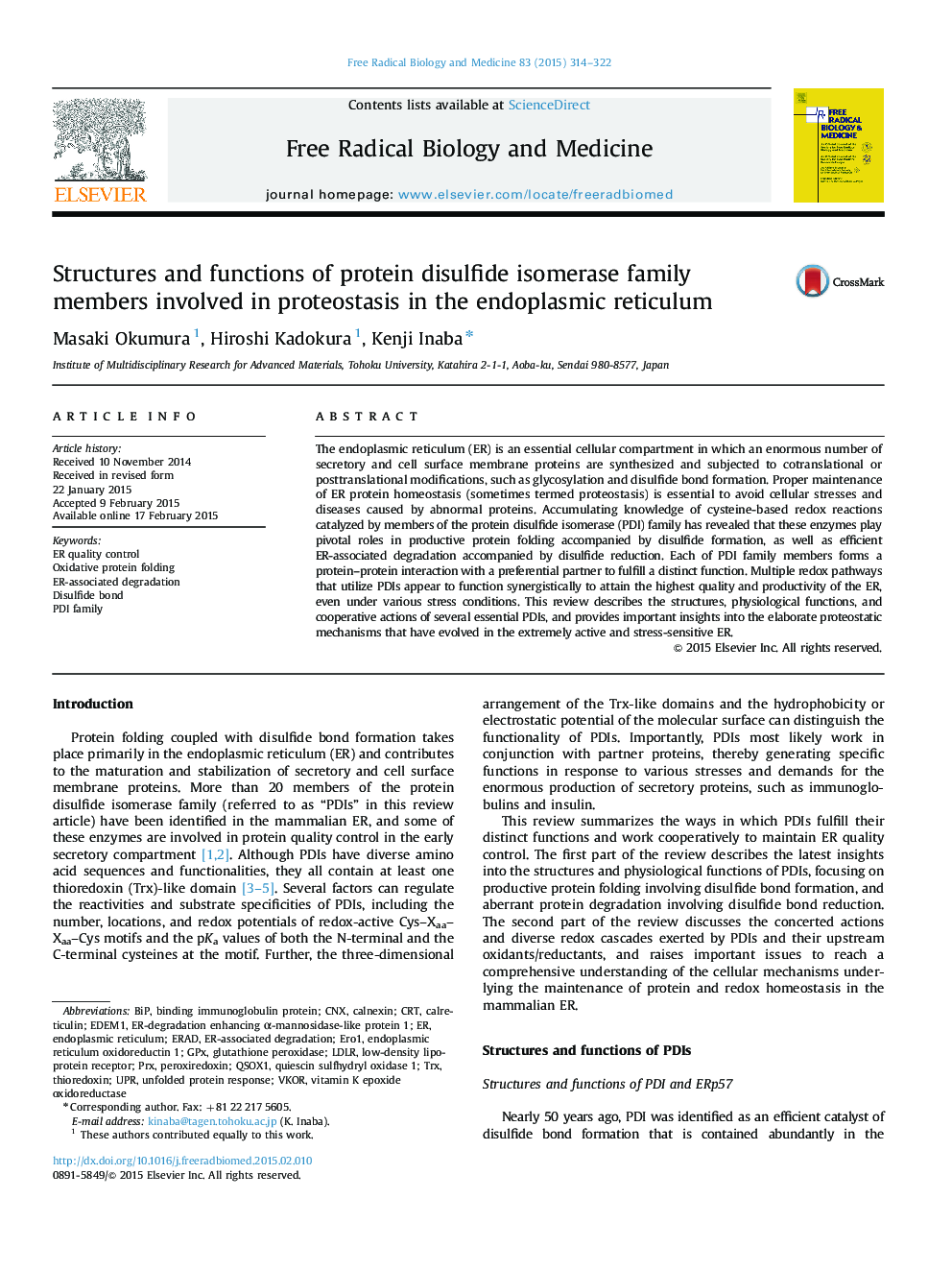| Article ID | Journal | Published Year | Pages | File Type |
|---|---|---|---|---|
| 1907940 | Free Radical Biology and Medicine | 2015 | 9 Pages |
•PDI family members work distinctly but cooperatively to ensure proteostasis.•Structures of the PDI family provide mechanistic insights into the ER homeostasis.•Structure analyses of the PDI family with their partners will be the milestones.•New physiological roles of the PDI family will be a frontier.
The endoplasmic reticulum (ER) is an essential cellular compartment in which an enormous number of secretory and cell surface membrane proteins are synthesized and subjected to cotranslational or posttranslational modifications, such as glycosylation and disulfide bond formation. Proper maintenance of ER protein homeostasis (sometimes termed proteostasis) is essential to avoid cellular stresses and diseases caused by abnormal proteins. Accumulating knowledge of cysteine-based redox reactions catalyzed by members of the protein disulfide isomerase (PDI) family has revealed that these enzymes play pivotal roles in productive protein folding accompanied by disulfide formation, as well as efficient ER-associated degradation accompanied by disulfide reduction. Each of PDI family members forms a protein–protein interaction with a preferential partner to fulfill a distinct function. Multiple redox pathways that utilize PDIs appear to function synergistically to attain the highest quality and productivity of the ER, even under various stress conditions. This review describes the structures, physiological functions, and cooperative actions of several essential PDIs, and provides important insights into the elaborate proteostatic mechanisms that have evolved in the extremely active and stress-sensitive ER.
Graphical AbstractFigure optionsDownload full-size imageDownload high-quality image (138 K)Download as PowerPoint slide
